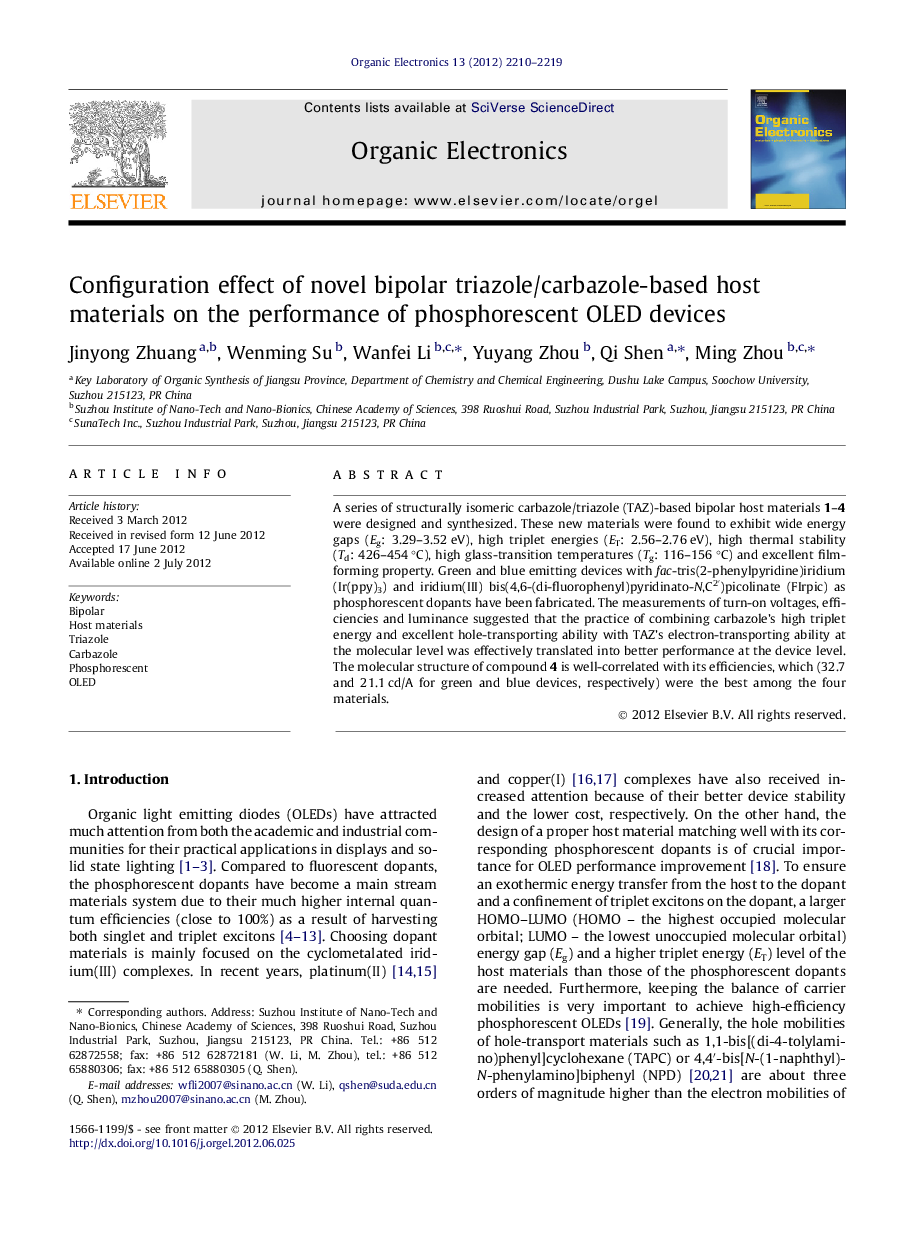| Article ID | Journal | Published Year | Pages | File Type |
|---|---|---|---|---|
| 1267399 | Organic Electronics | 2012 | 10 Pages |
A series of structurally isomeric carbazole/triazole (TAZ)-based bipolar host materials 1–4 were designed and synthesized. These new materials were found to exhibit wide energy gaps (Eg: 3.29–3.52 eV), high triplet energies (ET: 2.56–2.76 eV), high thermal stability (Td: 426–454 °C), high glass-transition temperatures (Tg: 116–156 °C) and excellent film-forming property. Green and blue emitting devices with fac-tris(2-phenylpyridine)iridium (Ir(ppy)3) and iridium(III) bis(4,6-(di-fluorophenyl)pyridinato-N,C2′)picolinate (FIrpic) as phosphorescent dopants have been fabricated. The measurements of turn-on voltages, efficiencies and luminance suggested that the practice of combining carbazole’s high triplet energy and excellent hole-transporting ability with TAZ’s electron-transporting ability at the molecular level was effectively translated into better performance at the device level. The molecular structure of compound 4 is well-correlated with its efficiencies, which (32.7 and 21.1 cd/A for green and blue devices, respectively) were the best among the four materials.
Graphical abstractFigure optionsDownload full-size imageDownload as PowerPoint slideHighlights► The novel carbazole/triazole-based bipolar hosts materials synthesized. ► The carbazole and triazole coupling modes are associated with the materials and device performance. ► The green and blue emitting devices showed reasonable good performance.
